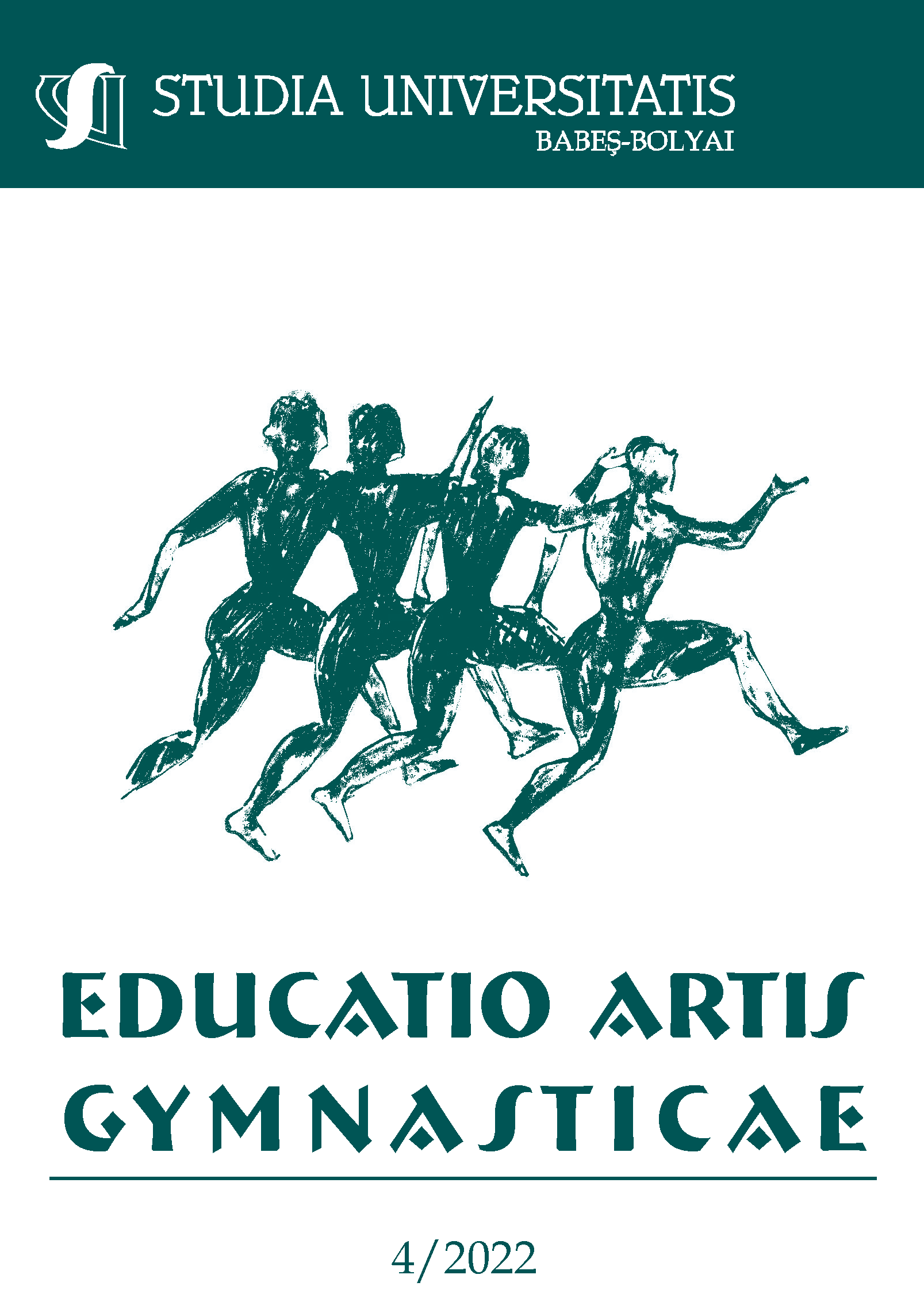POWER DEVELOPMENT IN THE STARTING PHASE OF SPEED RUNNING
DOI:
https://doi.org/10.24193/subbeag.67(4).38Keywords:
speed, power, start, athleticsAbstract
Introduction: Short distance running is part of the maximum intensity cycling exercises, consisting of combined efforts, each step being performed as a result of a complete impulse, characterized by covering a certain distance in a shorter time. Objective: This study aims to follow the development of power for the start in short distance speed trials. Material and method: A 26-year-old male athlete, who has been practicing athletics for 14 years, participated in the study, based on the 100-meter flat sprint. The pre-test was performed before the preparation period, the intermediate test after one, two and three mesocycles (months) and the final test after the fourth mesocycle (after 4 months). The evaluations followed the strength with which 4 exercises were performed (deadlift, clean, power clean and squat) of 6 repetitions each. At the same time, the length of the distance covered in the first three steps from the start was followed. During the four mesocycles, the athlete participated in specific strength development training. Results: Following the training program for the development of lower limb power, execution speed and lower limb strength, statistically significant results were observed in 2 of the 4 exercises performed in the evaluations. Regarding the jumped step starting from the two different positions, an evolution was observed reaching from the length of 5.24m to 6.44m in the first variant, and from 5.31m to 5.93m in the second variant. In both cases, the execution time of the three steps increased, reaching the value of 1.85s, respectively 1.49s. Conclusions: Following the results obtained in the five evaluations, we notice that the training program was developed efficiently and that the results improved in most of the evaluation tests.
References
Adams, K., O’Shea, J. P., O’Shea, K. L., & Climstein, M. (1992). The effect of six weeks of squat, plyometric and squat-plyometric training on power production. Journal of applied sport science research, 36-41.
Beast Sensors. (2014). Preluat de pe This is Beast: https://thisisbeast.com/.
Bračič, M., Supej, M., Peharec, S., Bačič, P., & Čoh, M. (2010). An investigation of the influence of bilateral deficit on the counter-movement jump performance in elite sprinters. Kinesiology, 73-81.
Cormie, P., McGuigan, M. R., & Newton, R. U. (2010). Adaptations in athletic performance after ballistic power versus strength training. Med Sci Sports Exerc, 1582-1598.
Dawes, J., & Lentz, D. (2012). Methods of developing power to improve acceleration for the non-track athlete. Strength & Conditioning Journal, 44-51.
Gacesa, J. Z., Barak, O. F., & Grujic, N. G. (2009). Maximal anaerobic power test in athletes of different sport disciplines. The Journal of Strength & Conditioning Research, 751-755.
Habibi, A., Shabani, M., Rahimi, E., Fatemi, R., Najafi, A., Analoei, H., & Hosseini, M. (2010). Relationship between jump test results and acceleration phase of sprint performance in national and regional 100 m sprinters. Journal of Human Kinetics, 29-35.
May, C. A., Cipriani, D., & Lorenz, K. A. (2010). Power development through complex training for the division I collegiate athlete. Strength & Conditioning Journal, 30-43.
Morin, J. B., Edouard, P., & Samozino, P. (2011). Technical ability of force application as a determinant factor of sprint performance. Med Sci Sports Exerc, 1680-1688.
Ni, M., Signorile, J. F., Balachandran, A., & Potiaumpai, M. (2016). Power training induced change in bradykinesia and muscle power in Parkinson’s disease. Parkinsonism & related disorders, 37-44.
Satavand, S., Nikbakt, M., & Habibi, A. (2021). Effect of post-activation potentiation in different time intervals on the explosive power of athlete girls. Journal of Practical Studies of Biosciences in Sport, 46-57.
Slawinski, J., Bonnefoy, A., Levêque, J. M., Ontanon, G., Riquet, A., Dumas, R., & Chèze, L. (2010). Kinematic and kinetic comparisons of elite and well-trained sprinters during sprint start. The Journal of Strength & Conditioning Research, 896-905.
Slimani, M., Paravlic, A., & Granacher, U. (2018). A meta-analysis to determine strength training related dose-response relationships for lower-limb muscle power development in young athletes. Frontiers in physiology, 1155.
Downloads
Published
How to Cite
Issue
Section
License
Copyright (c) 2022 Studia Universitatis Babeș-Bolyai Educatio Artis Gymnasticae

This work is licensed under a Creative Commons Attribution-NonCommercial-NoDerivatives 4.0 International License.






